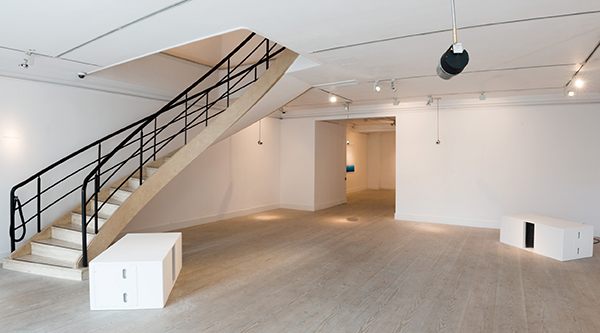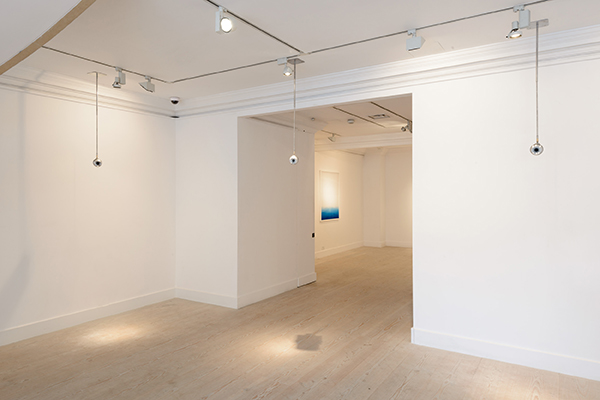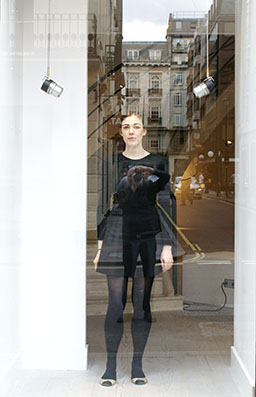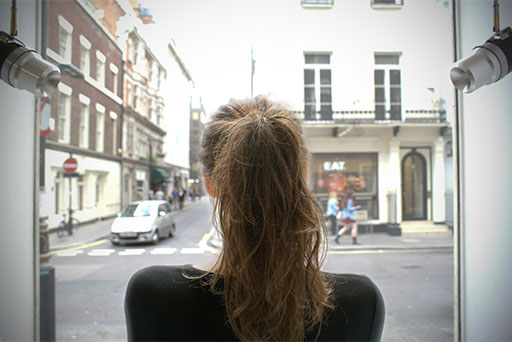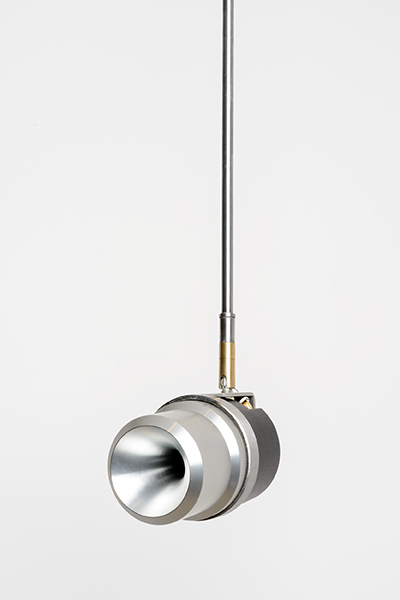 |
|
|
|
|
|
|
|
Installation no 3 for high and low frequencies is inextricably site-specific, part of my ongoing investigation into architectural acoustics, spatial hearing and modes of listening. It is part of a series of installations which have developed in part from ideas I began exploring while doing sound for a theatre production in Toronto. I don’t normally work in theatre, but I was invited to work with Scottish director Graham McLaren, who has a reputation for edgy and adventurous work and who promised me enough creative freedom to make it interesting. I thought the best way to allow room for the actors’ voices but still make the sound a powerful presence was to occupy the frequencies above and below those of the human voice. Back in London, I embarked on a series of installations developing the use of only high and low frequencies in a gallery context. Installation no. 3 for high and low frequencies makes use of auditory phenomena known as ‘beat frequencies’ and ‘standing waves’ to essentially sculpt with sound in a site-specific way. Beat frequencies occur when two tones of slightly different pitches alternately reinforce and cancel each other out in rhythmic patterns that can be sped up or slowed down according to how large or small the interval between the two pitches is. This phenomenon can often be experienced in every day life, as for example when sitting in a stationary car next to an idling bus, when the low frequency vibrations of the car interact with those of the bus. Standing waves are stationary sound waves that remain in a constant position as a result of the interference of two or more waves travelling in opposite directions: because this produces ‘nodes’ where the sound is loud and ‘anti-nodes’ where it is much quieter, it is a phenomenon that audio engineers and architectural acousticians seek to avoid, particularly in concert halls. By using low frequency sine tones that are more felt than heard, by tuning these to the resonant frequencies of the space and by manipulating the beating pulses that occur in the air between and around the subwoofers according to the acoustic response of the space, this work allows the architecture itself to participate actively in the sounding experience. Sine tones are simple, ‘pure’ sounds, but by manipulating the ways that they interact with each other in air, complex sonic phenomena can be produced. Low frequency vibrations, as Brandon LaBelle puts it “extend listening to a deeper and fuller embodied presence.” This piece explores the sensory threshold between feeling and hearing. It also operates near the amplitude thresholds of hearing: sometimes it’s so quiet it becomes difficult to tell if the installation is actually producing any sound or if everything you hear is part of the existing soundscape and the slight vibrations you feel with your feet are because of a lorry on the street; at other times, the sound becomes intense and perhaps disturbingly physical, though never, I hope, painful. At such times, the visitor’s auditory attention is exclusively inside the gallery, whereas when the sounds in the gallery fade very slowly away, listeners’ attention is gradually drawn outward again, to traffic noise or to voices from upstairs, perhaps. There is seldom an unequivocal line between artifice and reality in this work. Indeed, despite the purely electronic origins of the sounds, some visitors describe the work as strangely ‘organic’, referring, I assume, to its integration with the urban soundscape rather than to the origin of the sounds. Both of the installations I’ve made for this show aim to heighten the visitor’s sensitivity to sound in ways that will hopefully continue for at least a short time after they leave the gallery. The works also encourage visitors to slow down by promoting an apparent suspension of time through a rarefied visual environment and the use of very slowly developing sounds and/or temporal structures. This measured, rarefied atmosphere invites a meditative state of mind which is often impossible while surrounded by the hustle, noise and danger of the street. The ambient sounds from beyond the gallery’s glass front are an integral element of the installation: the piece includes all the sound you can hear at any time. In addition to sine tones (both low and high), I have also created high frequency synthetic sounds while working in situ. These sounds are developed quite subjectively; they are not meant to imitate, but to integrate with the existing soundscape so that sometimes it might seem that a sound will seem to start outside but end inside the gallery. The effect is to make the walls of the gallery seem, at times, to be acoustically translucent. There are also gaps in the sound coming from the speakers when the space is allowed to return to its ‘normal’ ambient state. The same beating phenomenon that occurs in the low frequency range is also exploited with the sounds coming from the aluminium tweeters (specialist high frequency speakers) suspended around the gallery. The small alcove at the front of the gallery in which two of the high frequency speakers have been installed allows visitors to experience a slightly different perspective on the work, both visually and aurally. Standing between the speakers, looking out to the street, you experience an odd sense of being on display, of being part of the work. Some of the sounds I’ve chosen to use in that space have the effect of ‘masking’ some sounds from the main space, so the piece can often sound entirely different there, both because of the odd acoustics of the alcove but also because of the way that some sounds seem to obscure other sounds coming from the main room. Low level white and pink noise are sometimes used in offices to mask other sounds in the soundscape, paradoxically making the overall noise levels seem subjectively quieter. |
This project was generously supported by
![]() ....
....
![]()

